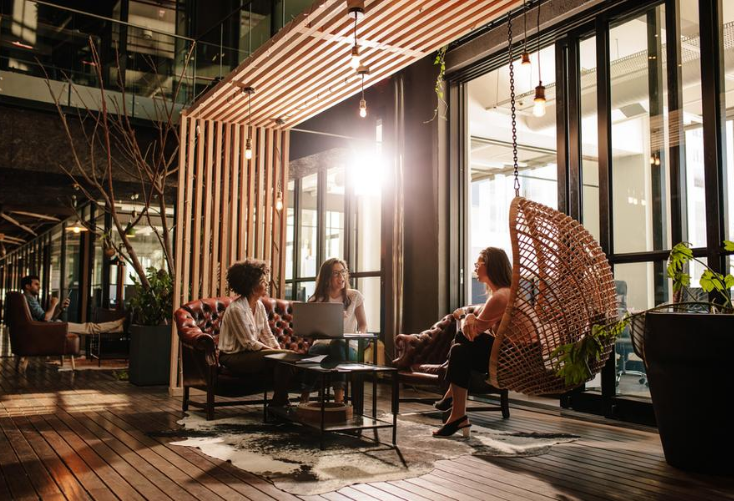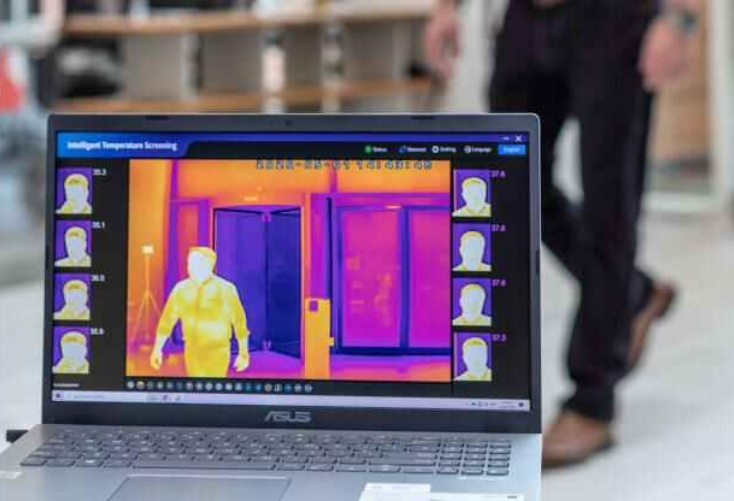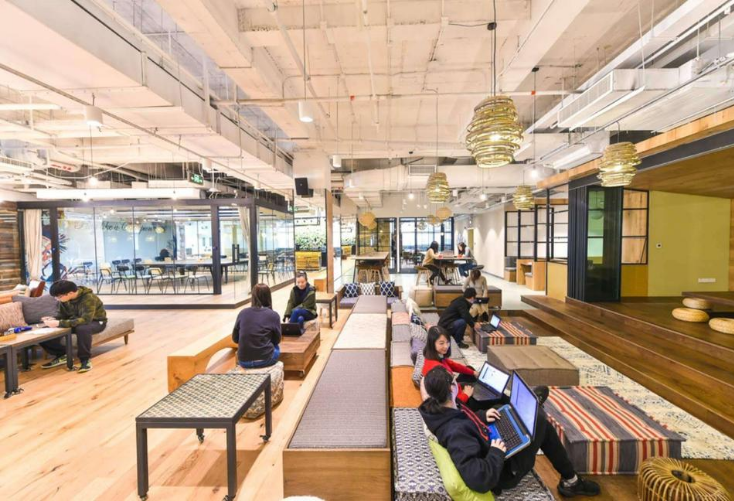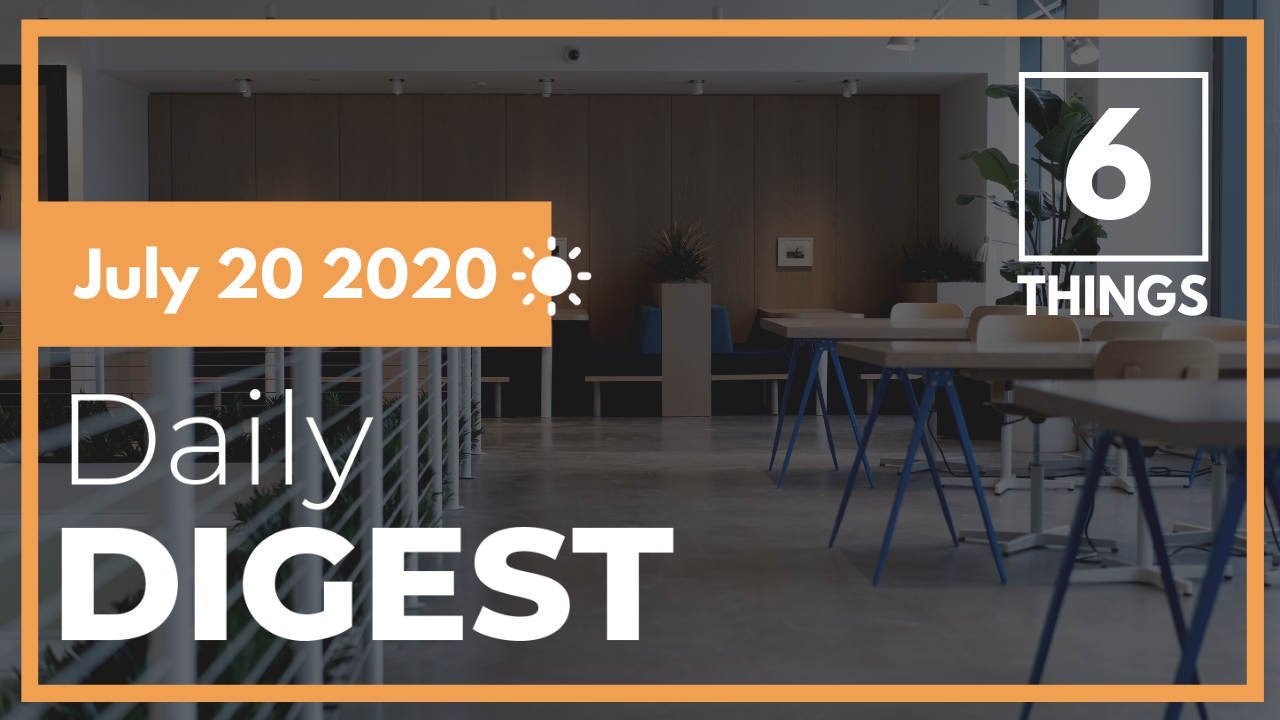Hand selected flexible workspace news from the most reliable sources to keep you ahead of the pack. We find all the latest news, so you don’t have to. Morning and afternoon updates. Stay in the know.
Here’s what you need to know today:
- What Employees Want From The Future Of Work NEW
- How Companies Can Support Workplace Flexibility NEW
- Technology For The Future Of Offices NEW
- Asia-Pacific’s Flex Office Market Is Staying Persistent
- The Future Of Physical Offices
- Adapting To The New Needs Of The Workplace
What Employees Want From The Future Of Work
According to a new study from Singapore-based workplace design consultant firm Space Matrix and US-based design firm Interior Architect, flexibility and hygiene are the two most important factors for employees returning to the office.
The research found that 63% of US and 60% of Asia respondents said it was essential for companies to address a phased re-entry strategy as well.
Additionally, the majority of the 2,500 respondents ranked the ability to have a work-from-home option moving forward as number one.
As far as the most missed factor in a remote working arrangement was face-to-face interactions with colleagues. Some added that collaboration has become trickier to accomplish since going remote.
“The survey by Space Matrix and Interior Architects has brought about interesting insights that guide conversations with our clients around the future of their workplaces,” said Su-San Tan, Director of Workplace Strategy and Insights.
The survey also provides a look into how companies should plan to find a balance between at-home and in-person work. Organizations need to plan on addressing these issues in order to adapt to the changes that come with the future of work.

How Companies Can Support Workplace Flexibility
A new report titled ‘Working from home during the COVID-19 lockdown: Changing preferences and the future of work’ from the University of Kent and the University of Birmingham has revealed that companies need to do more to support flexible working.
The research revealed that moms in particular were feeling the pressures of trying to balance childcare with work responsibilities. Throughout the lockdown, many mothers were forced to spend their evenings taking care of work and dads stepped up childcare duties.
Additionally, 30% of respondents said their productivity increased and many said they would like to continue working from home in the future.
62% said they were equipped with the appropriate resources and tools to work from home, while support for using such tools rose to 65% from pre-pandemic levels.
In order to continue supporting workers who need more flexibility in a post-pandemic workplace, employers should offer improved clear communications about flexible work policies. Even more, organizations need to find new ways to keep workers engaged and recognize employee accomplishments.
Another way to keep all employees satisfied is to integrate a reverse mentoring program to help improve intergenerational understanding and pivot away from common ideas on work culture such as presenteeism and more.

Technology For The Future Of Offices
Technology companies are marketing new tools and software to help organizations bring their employees back into the office. In order to do so, companies need to ensure that their workspaces are equipped with the right technology to provide workers safe, clean workspaces that emphasize the well-being of workers.
For instance, UK-based robotics firm Tharsus has developed wearable technology that helps workers with distancing. The necklace will alert the user every time they are in close proximity to another worker.
Contact-tracing apps have also been considered to be a part of reopening plans for companies and government. The apps use Bluetooth or location data to let users know if they have potentially been exposed to the virus. However, these apps have faced criticism from privacy advocates who believe they can be too invasive.
Thermal cameras have also increased in popularity as a way to identify what a person’s body temperature is. For example, Vodafone has deployed heat detection cameras that can be used in office entry areas to determine whether occupants have a healthy temperature.
“The data it gathers is only relevant at that particular point in time,” said Anne Sheehan, director of Vodafone Business U.K. “The device doesn’t include technologies such as facial recognition and it cannot be used as a tracking device.”
To maintain cleanliness and hygiene, lighting company Signify hopes to provide UV lights to disinfect surfaces in offices, school, restrooms and more.

Asia-Pacific’s Flex Office Market Is Staying Persistent
The Asia-Pacific flexible office industry has surprisingly stood relatively strong over the past 12 months according to The Instant Group’s recent data. With client demand remaining persistent, the market in Asia-Pacific has an optimistic future.
Flexible workspace supply grew by 19% over the past year, which marked the third consecutive year of high growth. This has brought the total number of flexible workspaces to 10,000 in the region.
“A trend that started with younger workers looking for short-term, flexible space has become a key tool for businesses of all sizes and is a trend that we predict will only grow in momentum across the Asia-Pacific region in the coming months as those companies that have expiring leases look at ways to future proof their workplace strategy,” said Sean Lynch, Managing Director of the Instant Group in Asia-Pacific.
In fact, 60% of the top 20 cities in the region saw double-digit growth in supply in 2019. Still, certain cities have seen slow growth in more recent months due to lockdowns. However, these obstacles are short-term problems and as businesses begin to open, demand is starting to pick back up.
While the industry as a whole will be able to weather this storm, smaller providers may not, which will likely lead to a dip in anticipated investment levels. Regardless, competition is expected to remain strong and many established operators will have the opportunity to evolve in the coming years.

The Future Of Physical Offices
It was just earlier this year when companies were embracing open office plans that hoped to foster collaboration and community. Now, the days of cubicles and private offices may be back on the menu.
Companies large and small have recently made the transition to remote working policies, and with that will inevitably be a change in physical office environments for the foreseeable future.
According to Colliers International, the national office vacancy rate was around 12%, offering a grim look at how the pandemic has impacted the real estate industry.
However, this dip in real estate could mean good things for the flexible office industry. In fact, Colliers expects that tenants will look towards more flexibility moving forward to decrease any leasing risks. A recent survey from the firm found that 44.5% of respondents want more flexibility built into traditional leases, without changes to the length of leases.
In the meantime, flexible office operators are having to reconfigure their shared workspaces to meet the new needs of today’s workforce.
“Tenants are evaluating their options for space with a lens for reducing long-term obligations while generating cost savings,” said Kevin Morgan, northwest regional president for USA Brokerage.
As of now, Colliers expects that the office market will slowly start to turn around by the fourth quarter of 2020 or in early 2021, but warns that the sector will struggle to show real strength until later next year or even 2022.

Adapting To The New Needs Of The Workplace
Working from home seemed like a temporary solution to a misunderstood problem, but now, it appears that millions of employees will continue to work remotely for the foreseeable future.
So how can organizations adapt to the new future of work and changing demands of workers?
According to research from internal communications company Tribe Inc., 50% of 250 respondents said that once it is safe to come back to the office, they would still like a hybrid of both at-home and in-office work environments. Nearly a quarter said they would prefer working from home full-time and another quarter said they want to return to the physical workplace full-time.
For some, the main perk of working from home is the lack of commute. Respondents commented about the amount of time they saved just by not having to travel to the workplace and that it has improved their quality of life.
Additionally, 54% said that their work-life balance has also improved, while others claim that they no longer know how to switch off at the end of the day. This has been particularly challenging for parents who are trying to balance family and work responsibilities.
The research also found that 48% said focusing on work has become easier. However, 47% said that collaborating with their colleagues has become more difficult.
Now, in order to maintain a healthy level of engagement and productivity for these workers, respondents said their employer should equip them with the home office equipment needed to do their jobs, such as monitors, desks, chairs, printers, connectivity and more.



 Dr. Gleb Tsipursky – The Office Whisperer
Dr. Gleb Tsipursky – The Office Whisperer Nirit Cohen – WorkFutures
Nirit Cohen – WorkFutures Angela Howard – Culture Expert
Angela Howard – Culture Expert Drew Jones – Design & Innovation
Drew Jones – Design & Innovation Jonathan Price – CRE & Flex Expert
Jonathan Price – CRE & Flex Expert













